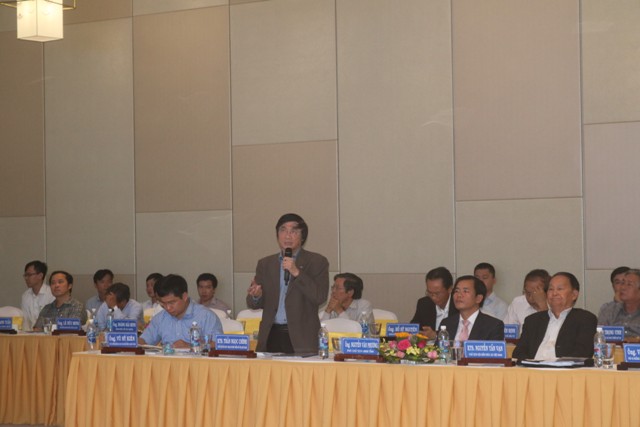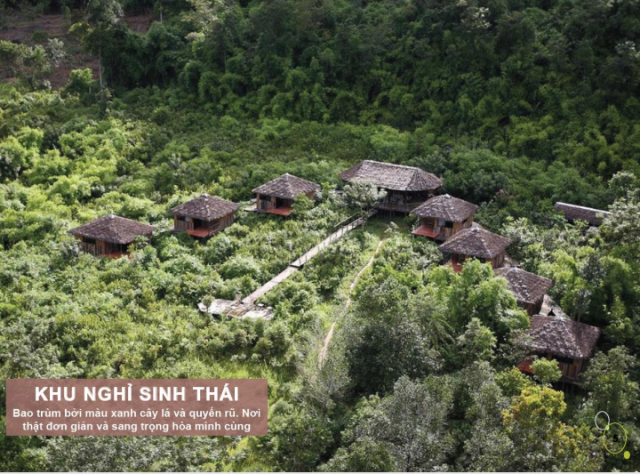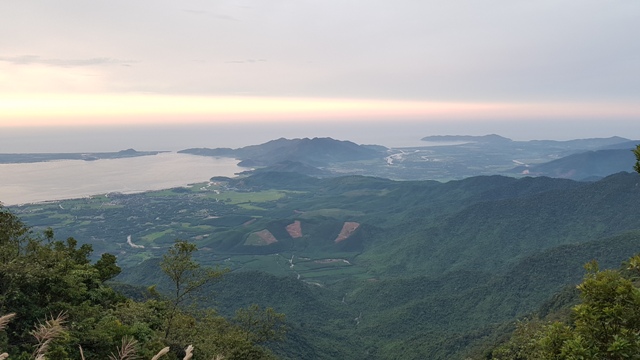
Architect Tran Ngoc Chinh, Chairman of the Vietnam Urban Planning Association shared his ideas at the conference
Not yet to be awaken
According to Mr. Nguyen Van Phuong, Vice Chairman of Thua Thien Hue People's Committee, Thua Thien Hue has a lot of potentials and strengths from landscapes, natural resources, relics ... With such characteristics, Thua Thien Hue is determined not to develop hastily but sustainably on the basis of green growth and to maintain economic growth at a reasonable level in relation to environmental protection and ensuring social security and national defense.
Bach Ma National Park can be considered a "sleeping princess," with many unawaken potentials and strengths.
Based on the unified planning policy of the Ministry of Agriculture and Rural Development, the provincial People's Committee has carried out the task of organizing the formulation and approval of planning tasks for the construction of Bach Ma ecotourist site.
Accordingly, the scale of construction area is about 387.8 hectares, including 2 zones. Zone A is designed as a base station and transport infrastructure covering an area of about 97.8 hectares, including three subdivisions: route access to the project, the first point is from the crossroad crossing the National Highway 1A to the end point of the route at the base station of Khe Su area; the base area of Khe Su area with a proposed area of about 64.1 hectares, is the place to welcome tourists and the cable car station location. The cable car traveling from the base station (area A) to Bach Ma peak (zone B) is expected to be 4km long with a protection corridor of about 26m.

Prof. Dr. Nguyen Ngoc Lung, Director of the Institute of Sustainable Forest Management speaking at the conference
Zone B is the Bach Ma peak ecotourism site, with a planned area of about 290 hectares, with the main functions including reception, seminar and exhibition venue, trade services (accommodation, convalescence, food, refreshments ...); outdoor activities (walking street, sightseeing routes, pilgrimage routes, festivals, spiritual beliefs, natural landscapes); administration, operation (administration building, staff quarters...) and technical assistance (power station, water station, waste disposal). The functional area of zone B includes mountain peaks tourist village, heritage tourist village, central village, spiritual tourist area, supplementary service area, waterfall valley tourist village, natural landscapes.
One of the main attractions of Bach Ma ecotourism site is the cable car system that uses a continuously circulating configuration and automatic clamping. The system includes 2 route: route 1 from the base station area (zone A) up to the peak of Bach Ma (zone B); Route B goes from Bach Ma peak station (1,395m high) to the terminus at Ngu Ho (1,140m high).
Planning goes hand in hand with ecological protection

Bach Ma Ecotourism Site (photos provided by the consultancy unit)
The conference focused on collecting opinions of scientists and experts in assessing the restoration of old villas, building the cable car system, and building administrative service center. At the same time, it was necessary for the conference to clarify the necessity of planning and establishing tourist resorts in the area of Bach Ma, and compare technology, construction methods, implementation plans and experiences to some provinces and countries in the world. This is the basis for determining the scale of guests in the planning area and assessing impacts towards the environment, landscape and ability to meet the demand of the total number of guests under planning...
Architect Tran Ngoc Chinh, Chairman of the Vietnam Urban Development Planning Association shared, planning actions in the exploitation of scenic landscape in the nucleus of the national forest (between construction, conservation and development) are inconsistent. Access to the experience of other countries, especially Asian countries with many similarities with Vietnam, remains limited.
In addition, the assessment of environmental impacts when developing and deploying projects in sustainable development and responding to climate change has not been done regularly and in a timely manner. The issue of ecotourism management (between management agencies and investors) lacks a clear legal basis in the process of establishment and development.

A part of Bach Ma National Park
Therefore, in order to have a basis for promoting ecotourism development on the basis of effective promotion and conservation, it is necessary to assess the feasibility of the project and the environmental impact of the project if it is implemented. At the same time, appropriate management models should be selected with the participation of local authorities to limit impacts on the ecosystem.
Mr. Nguyen Tuan Anh of the Research Institute for Tourism Development, Vietnam National Administration of Tourism, Ministry of Culture, Sports and Tourism said that ecotourism is very picky in terms of potential guests. Therefore, the planning of Bach Ma ecotourism site needs to pay attention to this factor to ensure the conservation of the values of natural resources, biodiversity and the environment. The planning of construction of cable cars or artificial recreation that bring noise in the ecological zone is something that should be avoided, as they are not consistent with the principles and requirements of ecotourism development and protection of landscape environment. In addition, planners should consider investing in the development of spiritual tourism at Bach Ma National Park.
At the end of the conference, Vice Chairman of the Provincial People's Committee Mr. Nguyen Van Phuong received the comments and affirmed that he would continue to receive comments from the people and researchers... towards the awakening of Bach Ma which has been asleep for a long time.
Bach Ma National Park is located at the intersection of two distinct climatic regions, North and South of Vietnam, with an average temperature of 15 - 22 ° C and rainfall of 8,000 mm per year (the highest in Vietnam). The pristine natural landscapes and biological diversity are a result of the terrain, the rich soil and climatic conditions which are suitable for the development of animal and plant species.
Story and photos: Hoang Loan
